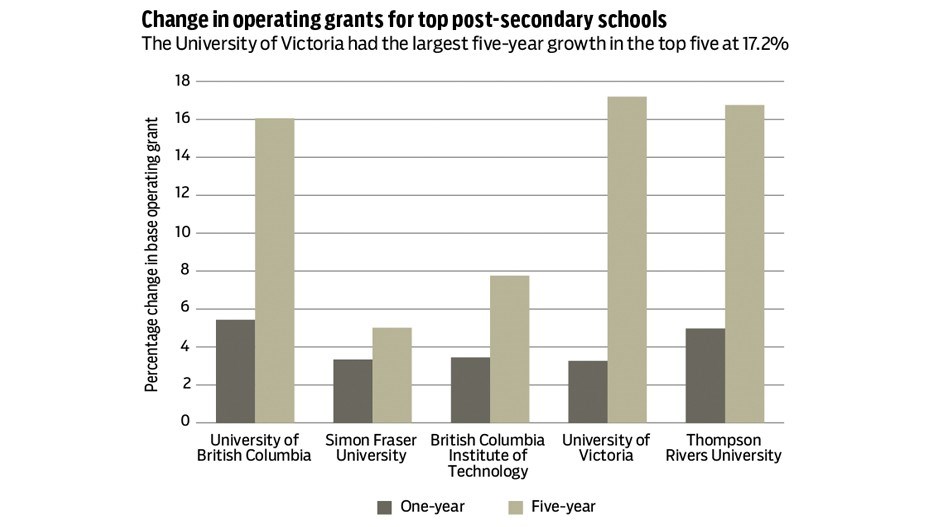British Columbia’s largest post-secondary institutions have continued to grow in 2019, though the number of full-time equivalent students has not kept pace with the growth in base operating budgets, according to data on Business in Vancouver’s Biggest Post-Secondary Institutions in B.C. list (page 12).
In 2019, the top 20 post-secondary schools’ base operating grants grew by an average of 4.6 per cent compared with 2018 while the number of full-time equivalent students grew 3.7 per cent over the same period.
The median growth in base operating grant was 3.1 per cent and the median growth in full-time equivalent students was 1.8 per cent, suggesting that larger schools higher on the list grew at a faster rate than smaller schools lower on the list.
Of the top 20, Okanagan College had the largest growth in its base operating grant, which rose 29.3 per cent to $45.9 million in 2019 from $35.5 million in 2018. While none of the schools in the top 20 suffered a decline in operating grants over the past year, North Island College posted the smallest base operating grant growth at 1.42 per cent.
At $17,618, the University of Northern British Columbia had the largest operating grant per full-time equivalent student in 2019.
The Justice Institute of British Columbia had the lowest base operating grant per student at $3,574.
Kwantlen Polytechnic University’s base operating grant fell 5.3 per cent to $68.9 million in 2019 from $72.7 million in 2015.
The University of Victoria had the largest five-year growth of the top five, growing 17.2 per cent to $229.1 million in 2019 from $195.5 million in 2015. The University of British Columbia raised its count of full-time equivalent students by 25.5 per cent to 56,912 in 2019 from 45,351 in 2015. Despite having the largest five-year student growth, UBC had the third-largest growth in base operating grant, which grew 16.1 per cent to $669 million in 2019 from $576.6 million in 2015.
— Albert Van Santvoort, Business in Vancouver


